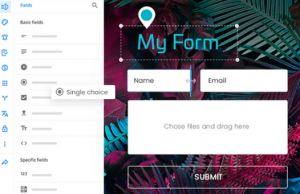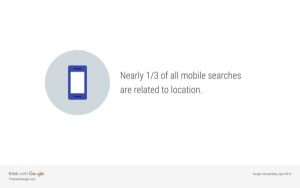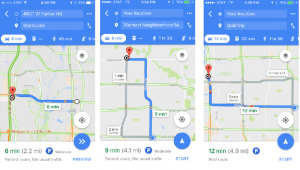By my reckoning, the history of digital technology can be broken up into four distinct epochs. So far we’ve experienced three, but the fourth, virtual reality, is just around the corner. It all began with the personal computer, a paradigm-shifting platform that added efficiency to our daily lives and reordered how we do business. Then along came the Internet and social media, novel technologies that connected an isolated patchwork of individual computers together to form a global network of information exchange and human interaction that proved to be greater than the sum of its parts. Not long after we had smartphones and tablets, which imbued our networked lives with a newfound mobility and gave birth to the attendant notions of proximity, relevance, and convenience. Here is where we sit today. Next up is virtual reality, a digital technology that, by holding the promise of creating fully immersive experiences that will fundamentally reshape how we socially interact with (and even conceive of) the world around us, may prove to be the most significant of them all.
At least Mark Zuckerberg and Facebook would have us think so.
Facebook’s Big Investment
In an official News Feed post on February 21st entitled New Steps Toward the Future of Virtual Reality, Facebook announced a number of statistics and initiatives that, when taken together, equate to a de facto expansion of the company’s investment in VR:
- Gear VR (a mobile virtual reality platform launched in partnership with Samsung in November of 2015 that combines Facebook/Oculus VR software with Samsung mobile hardware) now has 200 games and apps available for the platform in the Oculus store. People have already watched more than a million hours of video in Gear VR.
- New dynamic streaming technology for its 360 video (which is currently on Facebook) is coming to Gear VR (Dynamic streaming only shows only the pixels you’re actually looking at in the highest quality instead of delivering the entire 360 video in high resolution. This has the effect of quadrupling the resolution quality of 360 streaming video in VR while reducing the amount of required network bandwidth by 4x, making videos look clearer and play faster.).
- The rollout of a dedicated Social VR team that will focus entirely on exploring the future of social interaction in VR. The team will analyze how people can connect and share using today’s VR technology, and work closely with Oculus and other teams at Facebook to build the foundation for tomorrow’s social VR experiences on all platforms.
Incidentally, those who prefer hearing about these developments from Zuckerberg himself should check out this video of him at the recent Samsung Galaxy Unpacked event.
Video courtesy of Tech Events
Although all of the aforementioned announcements and initiatives are interesting and impressive on their own merit, the introduction of a dedicated Social VR team is to me the most significant, as it embodies Zuckerberg’s vision of virtual reality as an essentially social technology, and thus represents a notable translation of vision into action (read monetization).
VR Gone Social
Zuckerberg’s social-centric focus on virtual reality technology was apparent from the beginning, when Facebook acquired Oculus VR for $ 2 billion back in March of 2014. In a press release distributed on the day of the Oculus acquisition, Zuckerberg had this to say about its future as a social technology:
“Mobile is the platform of today, and now we’re also getting ready for the platforms of tomorrow…Oculus has the chance to create the most social platform ever, and change the way we work, play and communicate.”
In a Facebook post published on the same day announcing the acquisition, Zuckerberg noted various ways in which the Oculus’ VR technology could open up new kinds of experiences— experiences which, it’s interesting to observe with hindsight, are all inherently social:
“Immersive gaming will be the first…But this is just the start. After games, we’re going to make Oculus a platform for many other experiences. Imagine enjoying a court side seat at a game, studying in a classroom of students and teachers all over the world or consulting with a doctor face-to-face—just by putting on goggles in your home…This is really a new communication platform. By feeling truly present, you can share unbounded spaces and experiences with the people in your life. Imagine sharing not just moments with your friends online, but entire experiences and adventures.”
In a recent article for Wired, senior staff writer Cade Metz relates a story of how earlier this month Mark Zuckerberg spent twenty minutes playing zero-gravity ping pong with the president of Indonesia at Facebook’s Menlo Park headquarters. After the virtual smackdown had ended, Zuckerberg was more interested in highlighting the novel social interaction he had just shared with the Indonesian president rather than the doubtless mind-blowing nature of the immersive experience itself. Here’s how Metz characterized the event:
“As Zuckerberg describes his Oculus-powered ping pong match with Indonesian President Joko Widodo, his point is that the two of them spent twenty minutes in a virtual world doing something together. ‘What people care about,’ Zuckerberg says, sitting just down the hall from Facebook’s VR room, ‘is interacting with another person.’”
Implications for the Future of Marketing
This inherent human need for social interaction, when distilled through the immersive experiences of virtual reality, may force us to rewrite the book on digital marketing—literally. Right now we talk about providing seamless, personalized (which implies, or at least anticipates, immersive) customer experiences. Virtual reality campaigns, if properly applied and executed, could do this in spades. Forget seamless and personalized customer experiences; with VR, the gold standard will inevitably shift to fully individualized and idealized ones.
That these same customer experiences will be—as they’ve always been— almost inevitably social in nature is something Zuckerberg has always understood, which has allowed him to stay one step ahead of the pundit class on a fairly consistent basis. In truth, nearly every aspect of life, business especially, can be viewed through a social lens. The formula is quite simple: as long as you have two sides to a transaction, a producer and consumer, you have a social interaction—or at least the opportunity for one.
To fully grasp the promise (and peril) of this fourth epoch of digital technology that is virtual reality, I invite you to take part in a brief thought experiment. Take a few minutes to sit down and sketch out the various ways in which a user-friendly, fully immersive social VR technology might impact your brand or business. For my part, I spent some time thinking of the different ways we and the businesses we service could use social VR to better connect with and convert our respective target audiences, and I came up with scores of ideas and potentialities—some obvious, some less so. On a purely conceptual level, the possibilities of social VR are truly staggering.
After writing about marketing technology trends for some time now, I’ve learned to give Mark Zuckerberg the benefit of the doubt. It’s patently obvious that he was right on social, and over the past few years, it’s become increasingly apparent that he was right on mobile. Likewise, I’m willing to bet that, in time, he’ll be proven right on social virtual reality.
(24)








